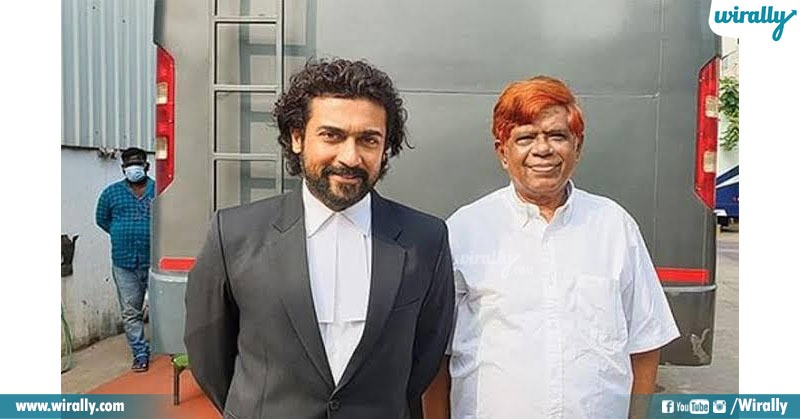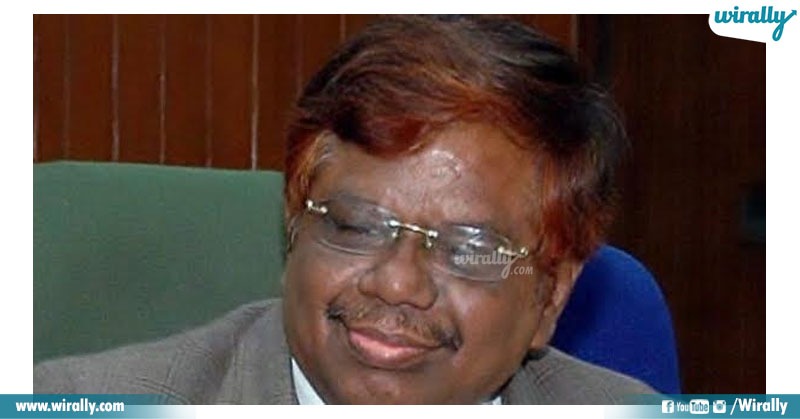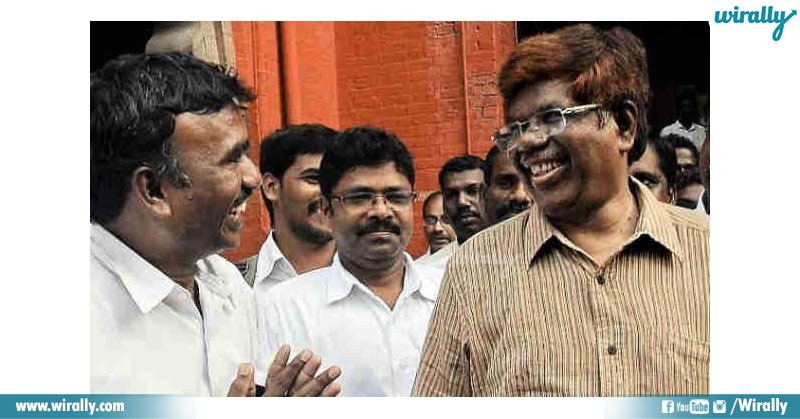Suriya’s Jai Bhim released on Amazon Prime Video is winning hearts everywhere.
Jai Bhim Based On The Life Story Of Justice K. Chandru:
Although this film is not a biopic of Justice K. Chandru. The movie is based on real-life instances of how the Irula tribes in Villupuram district in Tamil Nadu were subjected to custodial torture in 1995, and the legal fight put up on behalf of them by a human rights lawyer, Chandru.
Suriya About Playing On-Screen Justice K. Chandru:
 Though Justice Chandru had fought for many causes, I consider it a privilege to have got the opportunity to have been able to picturise at least one of those instances. Personally, it is a big recognition for me to have been able to do the character of Justice Chandru in the movie.
Though Justice Chandru had fought for many causes, I consider it a privilege to have got the opportunity to have been able to picturise at least one of those instances. Personally, it is a big recognition for me to have been able to do the character of Justice Chandru in the movie.
Who Is Justice K. Chandru:
Justice K Chandru is a renowned judge who has disposed of 96,000 cases and is well-known among the legal circles for some of his landmark judgments. Justice Chandru fought many cases on behalf of women, especially those from small towns, low-economic backgrounds and marginalised communities without charging a single rupee.
Some Of His Landmark Judgments Are:
Disposed off 96,000 cases in 6 years – Many judges did not touch even 50% of this number.
- Women can become priests in temples
- There should be common burial ground irrespect of caste;
- For staging plays, police permission not required;
- There should be community based reservation in noon meal centres.
The Legend Of Justice K. Chandru:
Justice K. Chandru became a Permanent Judge on November 9, 2009. He had disposed of nearly 96,000 cases, both at the Principal Seat and at the Madurai Bench. He is altogether a different kind of Judge. Known for his simplicity, he shunned some of the accoutrements that usually accompanied a Judge. He disliked pomp and pageantry. He was a role model for others.
- Did not want the red capped, silver mace bearing “Dawali” to announce his arrival – which was seen as a symbol of Power and Authority;
- He did not have a gun-toting personal security officer (PSO) beside him.
- He did not have official servants at home.
- He did not approve lawyers calling him “my lord”.
- He had surrendered his official car in the Morning of retirement and travelled in suburban train for going back home
- Did not accept retirement farewell and dinner in a star hotel – last occasion any Judge refused a farewell was in 1929
- One among the few judges to declare his assets to Chief Justice. On the day of retirement he declared his assets to the Chief Justice
A notice displayed at the entrance to his chamber declared:
“No deities – no Flowers
No one is hungry – no Fruits
No one is shivering—no Shawls
We need only best wishes”
Justice Chandru has been fighting for the society from the age of 16. Even before entering college, he had been a selfless person. Then, he became a people’s lawyer and a people’s judge.
Suriya On Behind The Idea Of Making Jai Bhim:
Justice Chandru refused permission to us for making a 15-minute documentary about his life. He was not interested in eulogising an individual. So we consider it a boon that he permitted us to make this movie about one of the many cases that he fought as a lawyer.
Justice K. Chandru About The Message Of Jai Bhim & Why He Refused A 15-Min Documentary On Him:
 Human rights lawyers conduct thousands of cases but they get confined only to law books. Therefore, rather than taking a film about my life and eulogising me, when a movie is made about a community such as the Irula tribes, it could help in being a start for a positive change in their lives.
Human rights lawyers conduct thousands of cases but they get confined only to law books. Therefore, rather than taking a film about my life and eulogising me, when a movie is made about a community such as the Irula tribes, it could help in being a start for a positive change in their lives.
Secondly, people will get to know how difficult it is to get a judgment from a court of law. This movie is to show how a lawyer could use his skills, learnt the hard way, for the betterment of society. This movie is to show how lawyers can also fight for those who cannot afford any fees. This will enthuse confidence on the judicial system and also give hope to young lawyers that they can also fight for the causes that they believe in.
 When these things are shown in a bigger canvas, the message will reach greater number of people. I thought that cinema, beyond being a medium of entertainment, can also be a medium to exhibit the life of ordinary tribals and the judicial system. Therefore, when director Gnanavel asked, I agreed to it. The most important thing is that when an established actor like Suriya is part of it, the status of the movie gets elevated to a different level.
When these things are shown in a bigger canvas, the message will reach greater number of people. I thought that cinema, beyond being a medium of entertainment, can also be a medium to exhibit the life of ordinary tribals and the judicial system. Therefore, when director Gnanavel asked, I agreed to it. The most important thing is that when an established actor like Suriya is part of it, the status of the movie gets elevated to a different level.
There is a grim thought among people that courts are of no use and that they are institutions which serve only the rich. This film will give a ray of hope that even the underprivileged can fight for justice in courts of law.
Justice must be served to the truth.


















